The DFI LANParty NF4 SLI-DR
BIOS

The LANParty NF4 SLI-DR has quite possibly the most extensive BIOS I’ve seen. Utilizing the Award BIOS, DFI lets the user customize just about every aspect of this board. I’ll mainly limit an explanation to the Genie BIOS as most everything else is self explanatory, and I’ve covered DFI’s CMOS reloaded in my 875P-T review
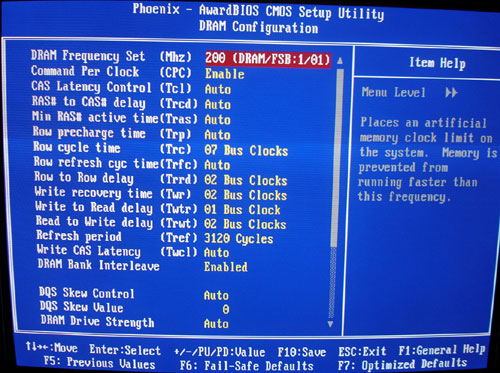
The Genie BIOS is where most of us will spend our time tinkering with everything from the different voltages to memory timings. On the voltage side, DFI really gives us alot of room to play with memory voltages ranging from the low 2.5V to the insanely high 4.0V (available by switching on onboard jumper).
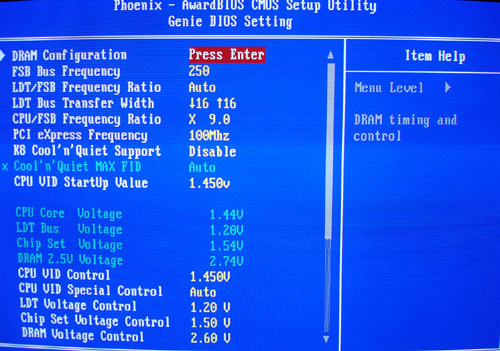
The CPU voltages are no less impressive ranging from 0,825V to 1.55V, while this may not seem very special DFI has also implemented something called “CPU VID Special”, which allows the board to give more juice to the CPU when needed. You can set its limits via a BIOS selection anywhere from 104% of the CPU voltage all the way up to 136%. It takes a little bit of basic math, and some common sense to make adjustments here. Using my 3500+ Winchester with a voltage of 1.425 I set the CPU Special to 110% and had no problems with overclocking my system. during this usage the VCore bounced between 1.425 and 1.56V, well within specs. Just be careful here. If you bump the VCore up on this board to the higher end, don’t forget to reset the CPU VID Special back to auto, or at least the lowest possible settng, or you may end up with a toasted CPU.
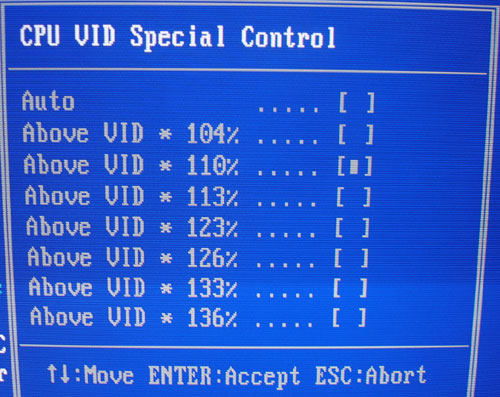
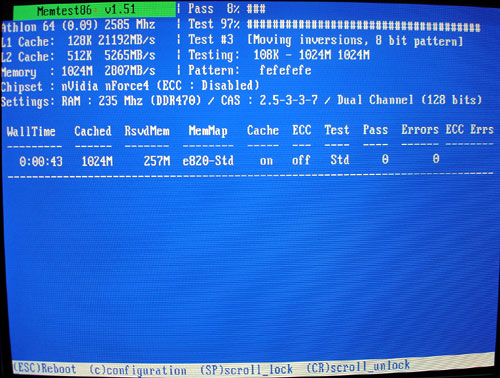
Something I was extremely impressed to see was an actual working version of “memtest86 v 1.51” included in the BIOS! Simply toggle it to “enabled” reboot your system, and it will test your memory for errors. What a great idea.
The DRAM Configuration is where you will make adjustments to your memory timings, and the list here is as impressive as the voltages available. DFI actually did an extremely nice job here. Their labeling of the memory timings and adjustments is just as wide as that found on ASUS boards, but with a little clearer explanation of each timing.
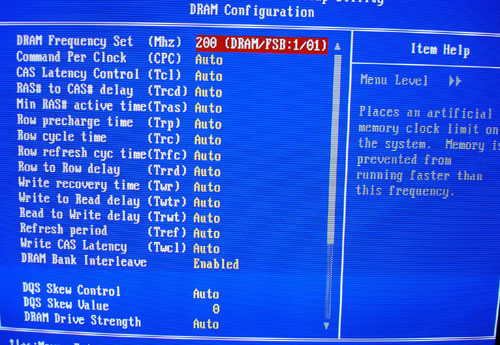
With such a customizable BIOS, coupled with the CMOS Reloaded feature, everyone from the hardcore gamer to the insane overclocker should be more than happy here. One more thing to point out is that at boot, most boards tell you whether you are running dual or single channel. DFI goes one better by telling you what your actual memory timings are, including the command rate.

Comments are closed.